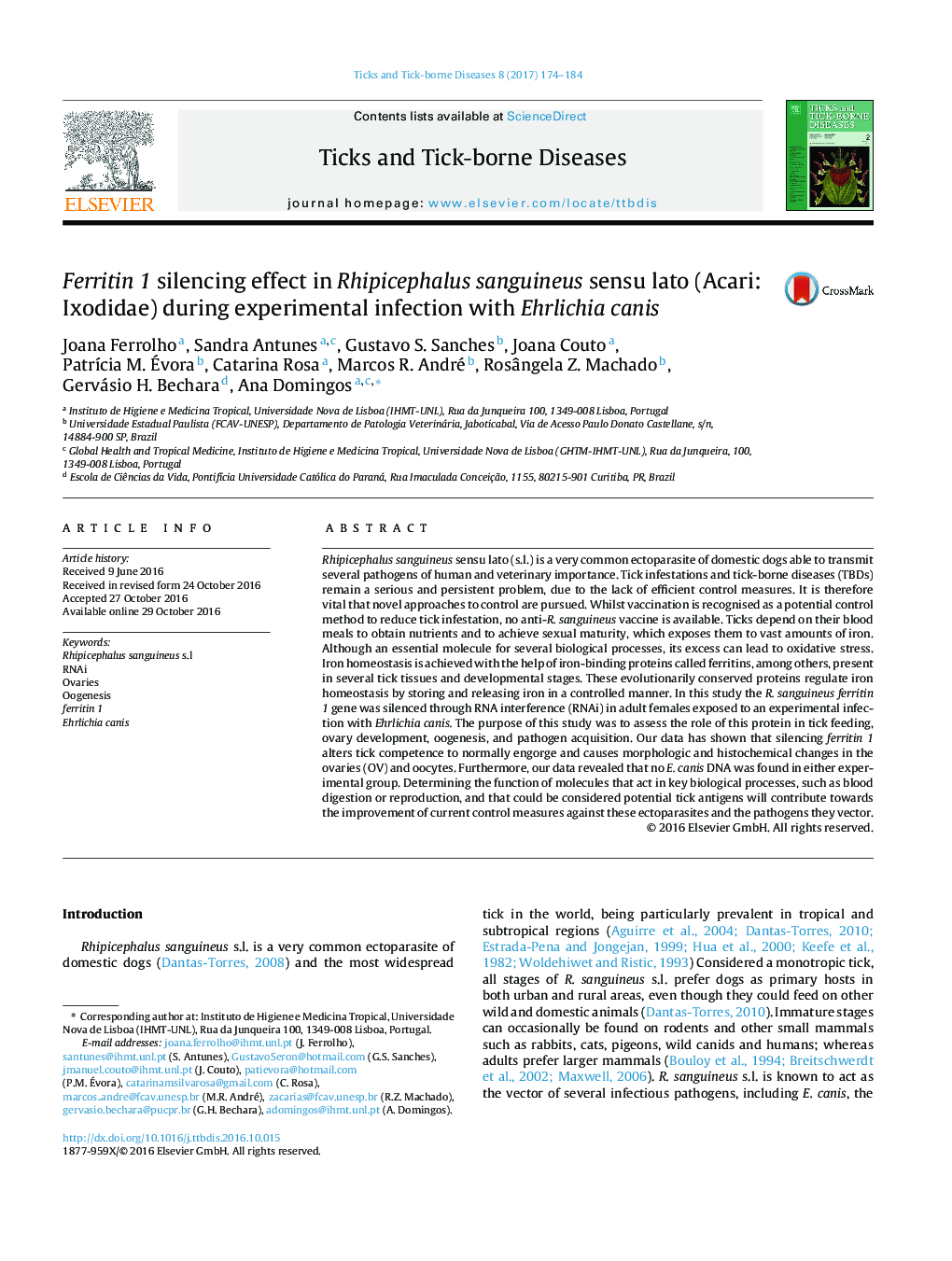| کد مقاله | کد نشریه | سال انتشار | مقاله انگلیسی | نسخه تمام متن |
|---|---|---|---|---|
| 5546462 | 1402743 | 2017 | 11 صفحه PDF | دانلود رایگان |

Rhipicephalus sanguineus sensu lato (s.l.) is a very common ectoparasite of domestic dogs able to transmit several pathogens of human and veterinary importance. Tick infestations and tick-borne diseases (TBDs) remain a serious and persistent problem, due to the lack of efficient control measures. It is therefore vital that novel approaches to control are pursued. Whilst vaccination is recognised as a potential control method to reduce tick infestation, no anti-R. sanguineus vaccine is available. Ticks depend on their blood meals to obtain nutrients and to achieve sexual maturity, which exposes them to vast amounts of iron. Although an essential molecule for several biological processes, its excess can lead to oxidative stress. Iron homeostasis is achieved with the help of iron-binding proteins called ferritins, among others, present in several tick tissues and developmental stages. These evolutionarily conserved proteins regulate iron homeostasis by storing and releasing iron in a controlled manner. In this study the R. sanguineus ferritin 1 gene was silenced through RNA interference (RNAi) in adult females exposed to an experimental infection with Ehrlichia canis. The purpose of this study was to assess the role of this protein in tick feeding, ovary development, oogenesis, and pathogen acquisition. Our data has shown that silencing ferritin 1 alters tick competence to normally engorge and causes morphologic and histochemical changes in the ovaries (OV) and oocytes. Furthermore, our data revealed that no E. canis DNA was found in either experimental group. Determining the function of molecules that act in key biological processes, such as blood digestion or reproduction, and that could be considered potential tick antigens will contribute towards the improvement of current control measures against these ectoparasites and the pathogens they vector.
Journal: Ticks and Tick-borne Diseases - Volume 8, Issue 1, January 2017, Pages 174-184